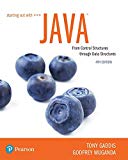
Explanation of Solution
Method definition for “reverse()”:
The method definition for “reverse()” is given below:
/* Method definition for "reverse()" */
public void reverse()
{
//Create a list "rev_list" and set it to "null"
Node rev_list = null;
/* This loop will perform up to the first node equals to "null" */
while (first != null)
{
/* Move a node to rev_list from what leftovers of the original list */
/* Set a reference "ref" to first node */
Node ref = first;
/* Set "first" to next first node */
first = first.next;
/* Set next node to "rev_list" */
ref.next = rev_list;
/* Set the "rev_list" to reference "ref" */
rev_list = ref;
}
/* Make the list "rev_list" as the new list */
first = rev_list;
}
Explanation:
From the above method definition,
- Create a list “rev_list” and then set it to “null”.
- Performs “while” loop. This loop will perform up to the first node becomes “null”.
- Set a reference “ref” to first node.
- Set “first” to next value of “first”.
- Assign next node to “rev_list”.
- Assign the “rev_list” to reference “ref”.
- Finally make the list “rev_list” as new list.
Complete code:
The complete executable code for “reverse()” method is given below:
//Define "LinkedList1" class
class LinkedList1
{
/* The code for this part is same as the textbook of "LinkedList1" class */
/* Method definition for "reverse()"*/
public void reverse()
{
//Create a list "rev_list" and set it to "null"
Node rev_list = null;
/* This loop will perform up to the first node equals to "null" */
while (first != null)
{
/* Move a node to rev_list from what remains of the original list */
/* Set a reference "ref" to first node */
Node ref = first;
/* Set "first" to next first node */
first = first...
Want to see the full answer?
Check out a sample textbook solution
Chapter 19 Solutions
Starting Out with Java: From Control Structures through Data Structures (4th Edition) (What's New in Computer Science)
- what is a feature in the Windows Server Security Compliance Toolkit, thank you.arrow_forwardYou will write a program that allows the user to keep track of college locations and details about each location. To begin you will create a College python class that keeps track of the csollege's unique id number, name, address, phone number, maximum students, and average tuition cost. Once you have built the College class, you will write a program that stores College objects in a dictionary while using the College's unique id number as the key. The program should display a menu in this order that lets the user: 1) Add a new College 2) Look up a College 4) Delete an existing College 5) Change an existing College's name, address, phone number, maximum guests, and average tuition cost. 6) Exit the programarrow_forwardShow all the workarrow_forward
- Show all the workarrow_forward[5 marks] Give a recursive definition for the language anb2n where n = 1, 2, 3, ... over the alphabet Ó={a, b}. 2) [12 marks] Consider the following languages over the alphabet ={a ,b}, (i) The language of all words that begin and end an a (ii) The language where every a in a word is immediately followed by at least one b. (a) Express each as a Regular Expression (b) Draw an FA for each language (c) For Language (i), draw a TG using at most 3 states (d) For Language (ii), construct a CFG.arrow_forwardQuestion 1 Generate a random sample of standard lognormal data (rlnorm()) for sample size n = 100. Construct histogram estimates of density for this sample using Sturges’ Rule, Scott’s Normal Reference Rule, and the FD Rule. Question 2 Construct a frequency polygon density estimate for the sample in Question 1, using bin width determined by Sturges’ Rule.arrow_forward
- Generate a random sample of standard lognormal data (rlnorm()) for sample size n = 100. Construct histogram estimates of density for this sample using Sturges’ Rule, Scott’s Normal Reference Rule, and the FD Rule.arrow_forwardCan I get help with this case please, thank youarrow_forwardI need help to solve the following, thank youarrow_forward
 EBK JAVA PROGRAMMINGComputer ScienceISBN:9781337671385Author:FARRELLPublisher:CENGAGE LEARNING - CONSIGNMENT
EBK JAVA PROGRAMMINGComputer ScienceISBN:9781337671385Author:FARRELLPublisher:CENGAGE LEARNING - CONSIGNMENT C++ Programming: From Problem Analysis to Program...Computer ScienceISBN:9781337102087Author:D. S. MalikPublisher:Cengage Learning
C++ Programming: From Problem Analysis to Program...Computer ScienceISBN:9781337102087Author:D. S. MalikPublisher:Cengage Learning New Perspectives on HTML5, CSS3, and JavaScriptComputer ScienceISBN:9781305503922Author:Patrick M. CareyPublisher:Cengage Learning
New Perspectives on HTML5, CSS3, and JavaScriptComputer ScienceISBN:9781305503922Author:Patrick M. CareyPublisher:Cengage Learning Systems ArchitectureComputer ScienceISBN:9781305080195Author:Stephen D. BurdPublisher:Cengage LearningProgramming Logic & Design ComprehensiveComputer ScienceISBN:9781337669405Author:FARRELLPublisher:Cengage
Systems ArchitectureComputer ScienceISBN:9781305080195Author:Stephen D. BurdPublisher:Cengage LearningProgramming Logic & Design ComprehensiveComputer ScienceISBN:9781337669405Author:FARRELLPublisher:Cengage Microsoft Visual C#Computer ScienceISBN:9781337102100Author:Joyce, Farrell.Publisher:Cengage Learning,
Microsoft Visual C#Computer ScienceISBN:9781337102100Author:Joyce, Farrell.Publisher:Cengage Learning,





